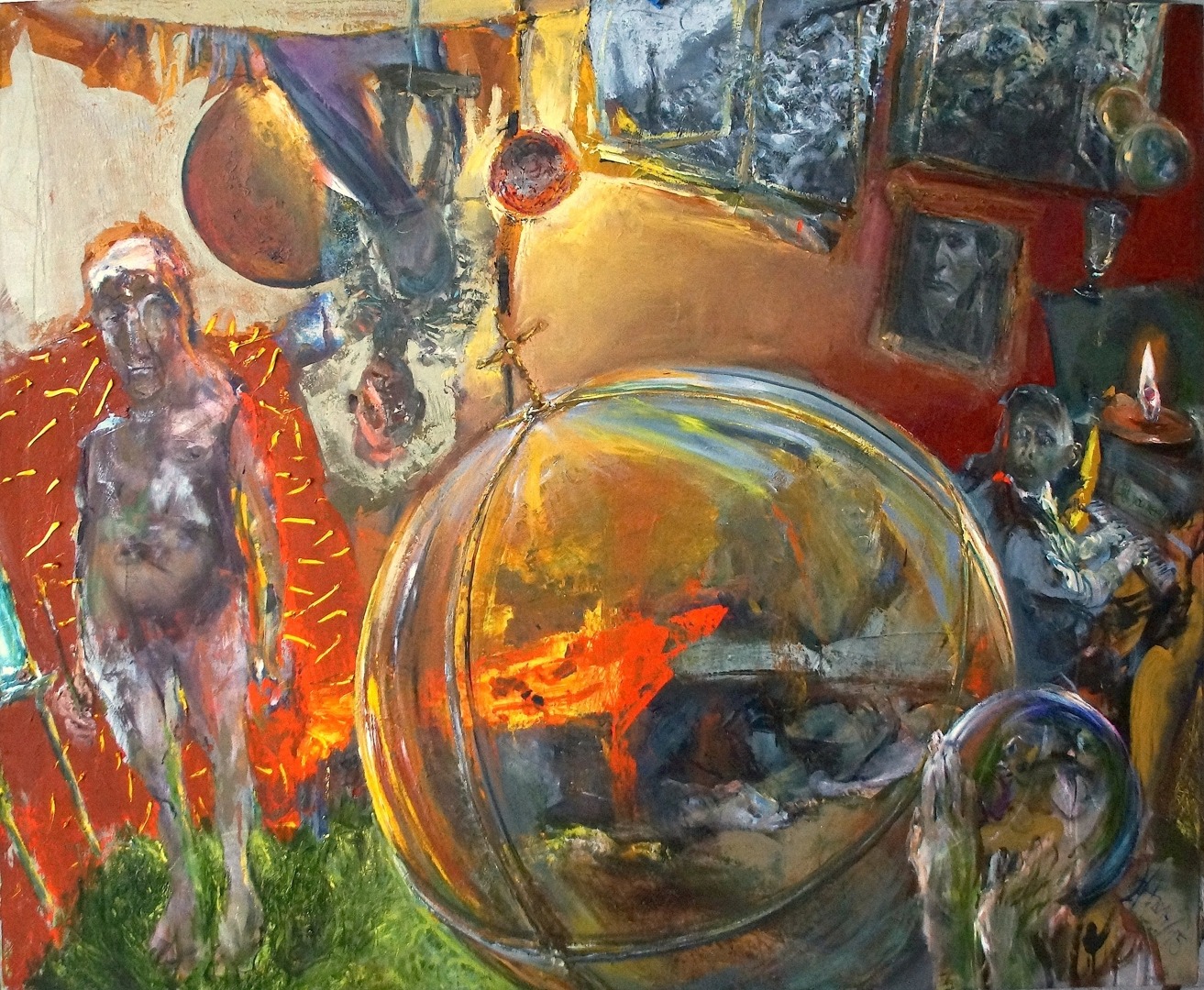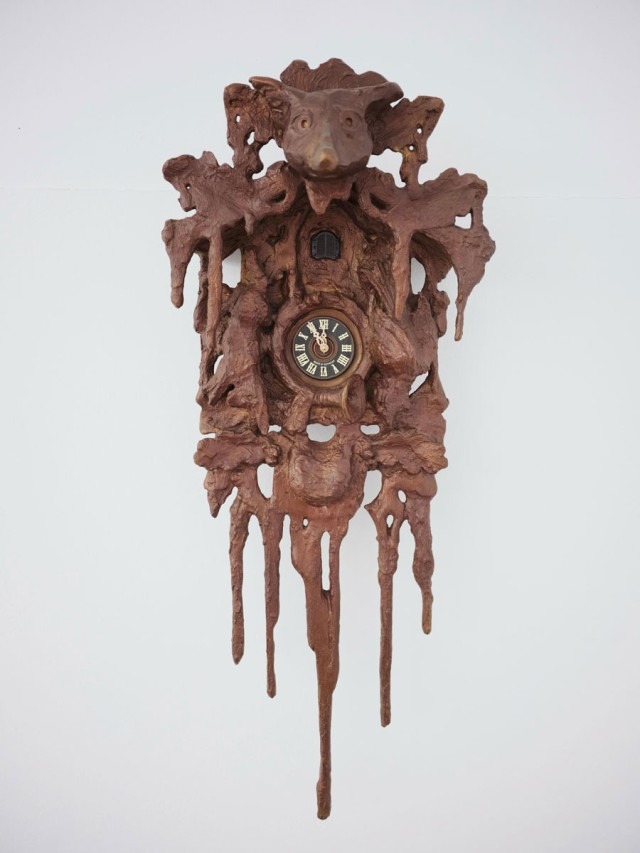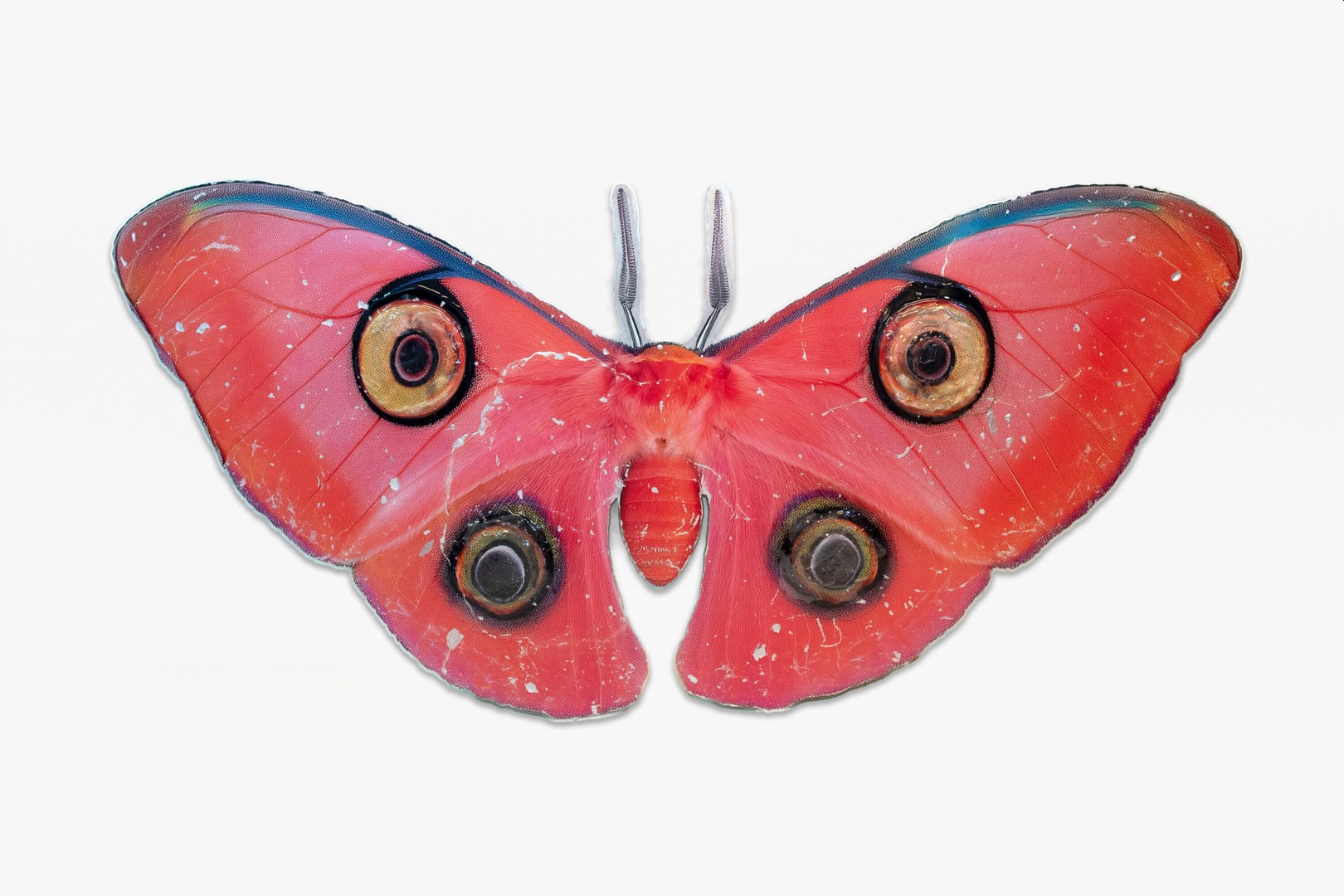
Highlights of ART COLOGNE 2025
The 58th ART COLOGNE will open next week from 6 to 9 November 2025. Daniel Hug, Director and artistic director of the art fair, provides a first overview of the offering in the interview.
Mr Hug, what are the highlights of the current edition of ART COLOGNE? Let’s start with the GALLERIES section, with art of the 20th and 21st centuries.
Especially positive is that two galleries from the United Kingdom have once again applied. For one, the Cristea Roberts Gallery from London, which was most recently represented at ART COLOGNE prior to the pandemic. It is known for its top editions by artists like Georg Baselitz, Jim Dine, Richard Long, Paula Rego and Tom Wesselmann. Not all of the works are blue chip. There are also more affordable editions. The other gallery is Richard Saltoun, with locations in London, New York and Rome. It represents many feminist artists from the 1970s and 1980s, including Annegret Soltau. Other woman artists can also be seen at its stand: Toyen, Romany Everleigh, Simryn Gill, Greta Schodl and Bracha Ettinger.
Galerie Buchmann from Berlin is returning with artists like Tony Cragg, Wilhelm Mundt and Bettina Pousttchi. Also returning is Galerie Kraupa-Tuskany Zeidler from Berlin, which is presenting works by Guan Xia, Brett Ginsburg and Pieter Schoolwerth. Further new participants can also be found in the postwar art segment of the COLLABORATIONS section.
Another highlight in the GALLERIES section is Galerie Anita Beckers, whose founder recently passed away. It will present a dual exhibition with Annegret Soltau and Jürgen Klauke, two artists who were very active in the 1970s and 1980s.
And how do things look in the NEUMARKT section for current art?
In this sector we now have 34 galleries as opposed to 26 in the previous year. That was also a surprise for me. The quality of the participants is very high. I find it very important that the new generation sees ART COLOGNE as relevant. For me, the growth is a definitive sign that the fair is an important trading venue for young, international galleries.
Yehudi Hollander-Pappi is coming from São Paulo. The gallery will not be presenting its own booth, but instead a rear wall, in front of which it will set up a large-format, mechanical installation by Adriano Amaral.
Lukas Goersmeyer. Untitled, 2025.31x31 cm.Clementin Seedorf
Can you name a few more newcomers and tell us something about their programmes?
New here is Sweetwater from Berlin. The six-year-old gallery has a highly conceptual programme and will present works by Friedemann Heckel and Christopher Aque for ART COLOGNE. An intelligent programme.
Also at the fair for the first time are The Pill from Istanbul, with works by Nil Yalter and Özlem Altin, as well as The Stable from S-chanf in the Canton of Grisons, Switzerland, with works by Patrick Salutt and Yves Scherer.
Clementin Seedorf is also a newcomer. In this case there is something more like a project space located in a hidden basement in the Südstadt of Cologne. This is the first time that they have applied for an art fair. They have a very interesting programme. Works by Lukas Goersmeyer, Amelie Karweick and Max Sandfort will be shown.
Also represented for the first time at ART COLOGNE is the gallery zaza’ with locations in Milan and Naples. The gallery is presenting works by Emanuele Marcuccio and Lydia Ourahmane. The entire stand will also be vacuum-packed in plastic like a product in the supermarket. I would call that an institutional critique. The build up will be quite complicated.
Also important are Kandelhofer from Vienna with artists like Acaye Kerunen, Marc Henry and Maximilian Prüfer, Galerie Koshba from Cologne with a solo presentation of Mitchell Kehe and LC Queisser from Cologne and Tiflis with works by Rafik Greiss, Karlo Kacharava and Anton Munar as well as Mountains from Berlin, who are back again after several years and will present two women artists, Lauren Coullard and Edi Dubien.
Will there also be a country focus this time? Last year there was a conspicuously large number of Turkish galleries represented at the art fair.
Dirimart and Sevile Dolmaci will also once again be part of the GALLERIES section this year, and Anna Laudel is participating in the COLLABORATIONS section. New with us is The Pill in the NEUMARKT section.
Also participating more this year are galleries from Spain, including the F2 Galería from Madrid and the Galería Fermay from Palma. In the COLLABORATIONS section, there will also be a Majorcan pavilion shared by three galleries. Baró Galeria, LaBibi + Reus and Xavier Fiol from the Majorcan gallery association Art Palma Contemporani. This association is our partner for the new ART COLOGNE PALMA MALLORCA, which celebrates its premiere in April.
Johannes Heisig. Mach Dir ein Bild!, 2014/15. 170x210 cm.DIE GALERIE
The COLLABORATIONS section has also been strengthened. What concepts are there, what interactions?
There is, for example, Die Galerie from Frankfurt. It will show the works of the two artists Johannes Heisig and Volker Stelzmann. Heisig is the son of the Informalist painter Bernard Heisig, while Stelzmann is referred to as the father of the Leipzig School. Both work mainly figuratively.
Also especially interesting in this section is the galería de las misiones from Montevideo. It is exhibiting together with the Sammer Gallery from Miami Beach. Both galleries concentrate on purely abstract painting and are particularly specialised in Latin American Constructivism and concrete art. They will offer a solo presentation of Tomás Maldonado (1922–2018), an Argentinian painter and designer. Maldonado was an instructor a the Hochschule für Gestaltung (HfG) Ulm and brought the Bauhaus philosophy into the postwar era. It is very interesting to be able to show this at the art fair here in Germany, where this style was born. That will surely be of interest to institutions and one or the other collector. I am really looking forward to it.
Galerie Zink is cooperating with Galerie Bao from Paris, which specialises in art from Vietnam. That also sounds very promising.
A+B Galerie and Rolando Anselmi will also stock a COLLABORATIONS stand. New here is Jo van de Loo from Munich, which is cooperating with Galerie Sperling.
Katja Novitskova. Earthware (Soft Approximation Suraka Silk Moth 01), 2024
162x78x6 cm. Temnikova & Kasela Gallery
Why are more and more galleries interested in the possibility of jointly presenting curated projects?
In economically difficult times, the COLLABORATIONS section allows galleries to save money by realising their presentation together. They can thus also show projects that wouldn’t necessarily pay off financially. For example, an exciting collaboration between Max Goelitz from Munich and Temnikova & Kasela from Tallinn, who will show works by Lou Jaworski and Katja Novitskova.
I also believe that interest has grown because the section is no longer separated. The COLLABORATIONS are placed everywhere, including in the lower hall.
Has anything in the hall planning changed?
Of course we had to enlarge the NEUMARKT section. There are still the four plazas, but the plaza in the southwest corner of the hall has been enlarged. In this corner we will build a small bar, which should be very pleasant.
Ado Hamelryck. No title, drawing, collage, 2023. 43x30 cm. Uitstalling Art Gallery
What is to be expected in the ART + OBJECT section?
The section is more compact this year. Worth mentioning here are Galerie Uitstalling from Genk and Poznan, which will present a solo show of the deceased artist Ado Hamelryck. The Belgian, who was born in 1941 and died in 2024, worked exclusively with the colour black. That will be a fine presentation. ART + OBJECT ultimately also refers to historical positions, and we find that this artist fits very well into this section.
KodlContemporary from Prague is also represented for the first time at ART COLOGNE. It is showing works of the painter and glass artist Ira Svobodová.
Also here again are Vivid from Rotterdam, 10 A.M. Art from Milan as well as Sgr. a Jörg Jung and Kaune Contemporary, both from Cologne.
With 167 galleries in comparison with 175 galleries in the past year, the current edition of ART COLOGNE is slightly smaller.
I think 167 participants is a good size. That’s also how big the fair was in 1968, when ART COLOGNE was viewed as the most important art fair in the world.
Charlotte Zander in her gallery, late 1970s Photo: © ZADIK E9, Charlotte Zander Archive, photographer unknown
What special events will there be?
The Landesbank Baden-Württemberg (LBBW) is once again presenting a special event. The theme this time is “Worlds of Sound”. Curated by Barbara Thomann, around 40 works by artists on the themes of music, sound and resonance will be shown. These will include works by Max Ackermann, E.W. Nay, Elizabeth Peyton, Martin Kippenberger, Isa Genzken and many others.
The Central Archive for German and International Art Market Studies (ZADIK) will show a presentation from the collection of Charlotte Zander. From the mid-1960s on, she built up her collection with works of artists who had not studied at art college. At that time, her works were referred to as “naive art”. The exhibition sheds light on the life situations of the collector, gallery owner and museum founder.
A giant bronze sculpture by Stefan Strumbel will be placed as a special event in front of Entrance South, presented by Galerie Ruttkowski 68.
Stefan Strumbel became famous for his artificial cuckoo clocks, such as this one, ‘Fox before Twelve’ from 2024. Photo: Leo Suhm
The art associations from North Rhine-Westphalia will present their editions in a pavilion. Valerie Knoll from the Kölnischer Kunstverein and Viktor Neumann from the Bonner Kunstverein approached me about this, and I found the idea of the group initiative good.
In addition to this, the Gesellschaft für Moderne Kunst will show its acquisition.
The “Cologne Gallery Night” is also taking place in the supporting programme of the art fair. The Cologne galleries will remain open until 10:00 p.m. on Saturday, 8 November. From the art fair, one can then walk directly into the city and visit the galleries. I think that’s fantastic.
The economic prospects are anything but good right now. Will that have an effect on ART COLOGNE turnover?
Certainly, the market has become more difficult, but that is of greater relevance for the global market. The national and the European markets are still doing quite well. It’s not as bad here as in the USA, where the crisis is considerably more tangible and galleries are closing. Corrections on the market are normal. There are also advantages, because the prices are sinking or normalising. ART COLOGNE is quite stable and is impacted less than fairs like Frieze or Art Basel.
Here in Cologne, all the important galleries are once again with us, and the interest of young galleries in participating is increasing. In addition, more galleries are also moving to the city, like LC Queisser from Tiflis, which recently opened a branch in Cologne. That also has to do with the central location of the city, which is close to Paris and Belgium and thus lies in the heart of Europe.
You have said that the fair should be a place for exchange, inspiration and societal reflection. How should we understand that?
Especially today, where everything is defined by the mobile phone and the Internet, human interaction becomes all the more important. The personal exchange remains crucial.
That is one reason why there will also be art fairs in future. It is not only about the mediation of art here, although that is actually the most important role of an art fair, but is also about the personal, the physical encounter with the art and the exchange about the content with gallery owners, other collectors, curators and museum people. That is the basis for a good art fair, and that will also play an important role in future.
Title image: Daniel Hug, Director and artistic director of the ART COLOGNE 2025


